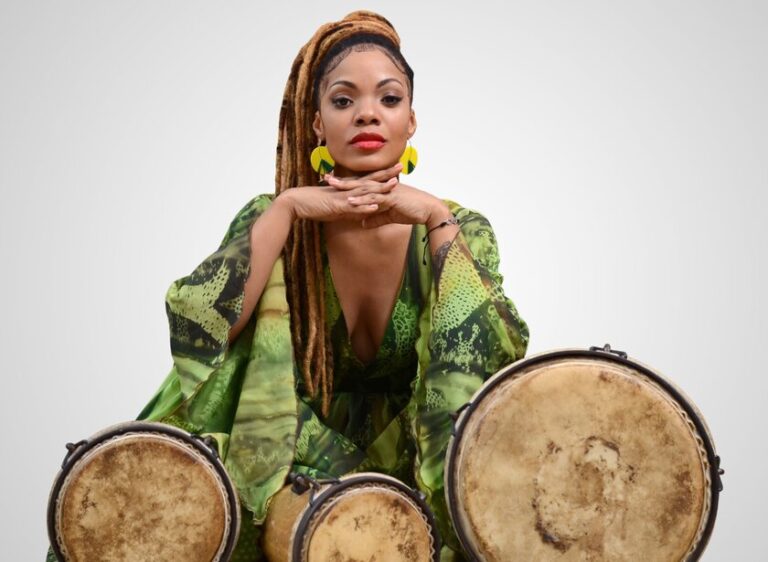The Caribbean was the gateway to America: the first explorers and navigators landed there. Music also landed there from Africa and Europe to merge with native sounds and create truly magical rhythms. A region of countless islands, expanding along all the coasts of an almighty sea, the Caribbean is the birthplace of diverse music genres, from calypso and mento to reggae and dancehall, from soca and mambo to salsa and merengue. This special report is an ideal sequel to our recent Central American music scene overview.
Endowed with a generous culture, Cuba is one of the best places in the world for music. Its history is so rich, thanks to its inexhaustible source of talent: in the last century, many artists came out of the island to show the world how wonderful and unique Cuban music is. Today, a new generation is encouraged to evolve and do things differently, but always respecting the legacy. A performer we’ve been recommending for a while and a key part of Cuban music’s renewal, Cimafunk rises as a huge star, capable of shaking up global stages and crossing sounds in pursuit of groove.
Wild master of Afro-Cuban funk, Erik Rodríguez chose the name Cimafunk to build a bridge between two worlds, where both Irakere and Funkadelic fit (in fact, he collaborated with both Chucho Valdés and George Clinton). However, this new generation of Cuban artists is especially empowered by female talent. Women who stand on rhythm, playing percussion or drums, from folklore to jazz, from rumba to soul, to become brilliant singer-songwriters: Brenda Navarrete, Yissy García, Daymé Arocena, Eme Alfonso and Arema Arega. The list wouldn’t be complete without female electronic duo Pauza and sharp rappers Telmary, Danay Suárez and La Dame Blanche. It’s also worth adding the Ibeyi sisters, global artists born in France, although their blood and spirituality are very Cuban.
Hip-hop has had an impact on the Caribbean for a long time, since the late 90s and early 00s, with the emergence of bands like Orishas and Los Aldeanos in Cuba, and Calle 13 in Puerto Rico. Today these names are no longer active, but that space is by no means empty. The Cuban hip-hop scene keeps flourishing with names like Golpe Seko, Mano Armada, El Urbano and Brebaje Man. On the Puerto Rican side, talented rappers and MCs also stand out: Negro González, Siete Nueve, PJ Sin Suela, Robertito Chong, Jazz Bandana, R-Two and the great duo La Estación Central. Of course, sometimes hip-hop tends to merge and become colored with soul, R&B and Afro-Caribbean rhythms, as the gifted and multi-instrumentalist singer-songwriters Seba Otero and Bebo Dumont usually do.
When it comes to rhythm and versatility, we cannot fail to highlight Laberinto del Coco, the alternative project led by Puerto Rican percussionist Héctor “Coco” Barez that fuses different genres such as jazz, funk and rock with bomba (the first native music of Puerto Rico, created on the sugar estates by enslaved Africans). We can also talk here about Cometta, a modern collective formed by Cosme and AC Metta, two Puerto Ricans based in Los Angeles, which has released a second album where practically everything goes: hip-hop, funk, reggae, pop, rock, urban music and Afro-Caribbean rhythms.
With reggaeton as the spearhead, Puerto Rico renewed its pool of mainstream artists, from Bad Bunny to Rauw Alejandro, passing through Ozuna, Myke Towers and Anuel AA. But some scenes are sustained by tradition, beyond commercial success, such as reggae, a music genre that became global and bands like Cultura Profética, Gomba Jahbari and La Muza established decades ago in Puerto Rico. Today we see Sie7e & The Islanauts, Yibáro and International Dub Ambassadors making their way, as is the Los Angeles-based multi-instrumentalist Pachyman. Of course, Jamaica is the birthplace of reggae and always keeps its flame alive. Artists like Chronixx, Kabaka Pyramid, Buju Banton, Queen Ifrica, Jah9, Protoje, Busy Signal, Jesse Royal, Romain Virgo, Raging Fyah, Alborosie, Duane Stephenson, Tarrus Riley, Bambataa Marley and Damian “Jr. Gong” Marley have long been proving to have the roots of this rhythm in their genes.
But let’s return to Puerto Rico to put the spotlight on the talented women of its music scene. And we don’t just say this for iLe, who went from being the little sister of Calle 13 to one of the most admired Latin singer-songwriters. We also say it to refer to MIMA, RaiNao, Tanicha López, Alexa Rivera, Lizbeth Roman, Calma Carmona, Neysa Blay, Audri Nix and Piquete. We can even extend this female-power list to another island to add Rita Indiana, La Marimba, Mula, Letón Pé and Nikola, all artists that not long ago we included in a dossier on the Latin alternative scene out of the Dominican Republic.
An island neighbor of the Dominican Republic, Haiti is one of the most fragile countries in the world, with poverty and a history of natural disasters. But at the same time, it’s a very culturally rich nation that combines diverse influences — intermingling the African, the European and the indigenous Caribbean. Its music is a living force, permanently interacting with dance (compas) and spirituality (voodoo). Artists such as Emeline Michel, Wyclef Jean and DJ Michael Brun have brought Haitian music to prominence worldwide for the past few decades. Most recently, Rutshelle Guillaume was recognized as “Best Caribbean Artist” at the Trace Awards & Festival 2023. Other local singers such as Darline Desca, Anie Alerte and Vanessa Désiré move in the same vibe of modern beats There’s another great female talent, although more linked to the folkloric and spiritual: Tafa Mi-Soleil.
Cover photo via Brenda Navarrete


